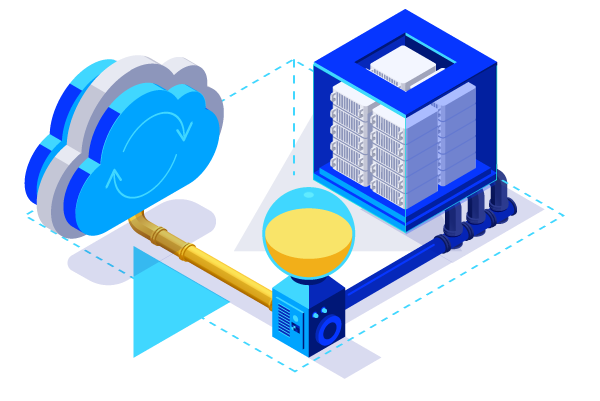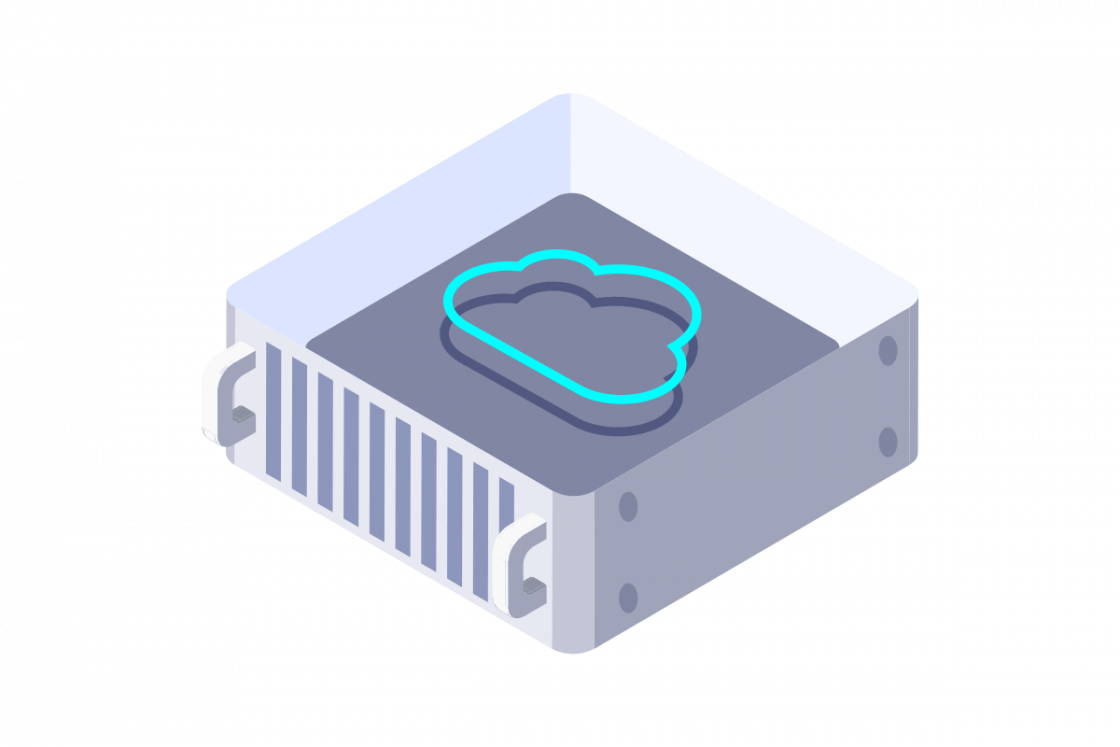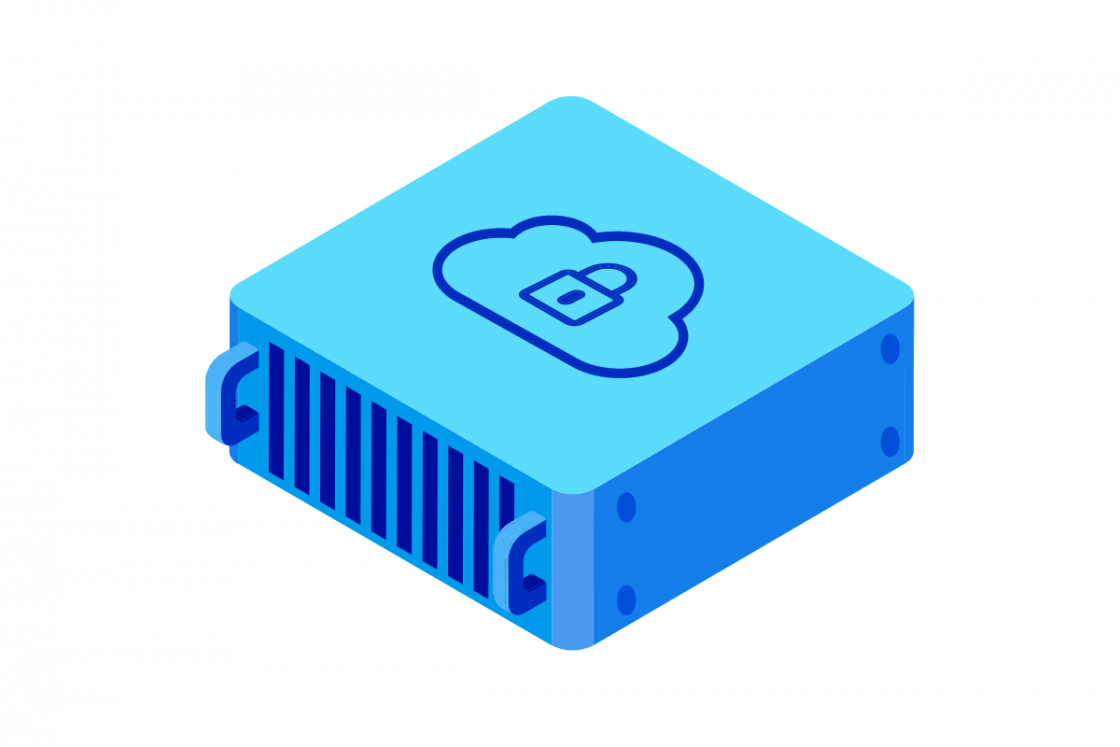What is Server Redundancy?
Server redundancy is the practice of utilising tools such as duplicate servers and associated components within an IT infrastructure in a manner that ensures uninterrupted service availability.
A core fundamental principle is to eliminate single points of failure, both on-site and in the public cloud. Suppose a primary server malfunctions due to hardware issues, software crashes, or other problems; a secondary, redundant server is ready to immediately take over its workload. The same goes for components within a server.

It’s a failover process that should be seamless, allowing applications, websites, and critical services to remain online and accessible to users, thereby preventing costly downtime and maintaining business continuity even in the event of unexpected technical issues.
Furthermore, server redundancy involves creating a resilient system architecture where critical elements are duplicated. In more robust setups, redundancy might extend to entire data centres located in different geographical regions to protect against site-wide disasters.
Why is Server Redundancy Important?
Server redundancy is critically important because it directly addresses the inevitability of system failures and the need for disaster recovery, aiming to prevent them from causing service disruptions. In any complex IT environment, hardware components can malfunction, software can crash, networks can falter, and power can be interrupted.
Without redundancy, any such failure in a primary server or its critical components can lead to immediate downtime for the applications or services it hosts. This downtime halts user access disrupts internal operations, and effectively stops any processes reliant on that server.
Beyond maintaining operational continuity, the importance of server redundancy extends to significant business considerations.
Service outages translate directly into tangible losses, including lost revenue from interrupted sales or transactions, decreased productivity as employees are unable to work, and potential damage to data integrity during uncontrolled failures.
Furthermore, frequent or prolonged downtime erodes customer trust and damages brand reputation, potentially driving users to more reliable competitors. For many organisations, particularly in sectors such as finance and healthcare, strict regulatory requirements or contractual Service Level Agreements (SLAs) mandate high levels of uptime, making redundancy not only beneficial but often compulsory. Investing in redundancy is, therefore, a crucial strategy for mitigating financial risk, protecting reputation, ensuring compliance, and guaranteeing a reliable user experience.
Types of Redundant Servers
Server redundancy is not a single configuration but rather a strategy applied in various ways, depending on the specific needs, the bare metal server in use, the budget, and the criticality of the systems involved.
Different approaches and technologies are used to duplicate server functions, ensuring that if one component or server fails, another can take its place.
Redundant Domain, Front End, and Validation Servers
Certain server roles are fundamental to user access and core network operations, making redundancy a crucial aspect. For instance, Domain Servers, such as Domain Controllers (DCs) in Windows environments or DNS servers, handle user authentication, access permissions, and network name resolution.
Having redundant DCs or DNS servers, often through multiple active servers sharing replicated data, ensures users can still log in and locate resources even if one server fails. Similarly, front-end servers, such as web servers handling initial user connections or application gateways, are often made redundant using techniques like load balancing across multiple identical servers.
If one web server goes down, traffic is automatically redirected to the other servers, ensuring continuous access. Validation Servers, responsible for tasks like verifying security tokens or authenticating API requests, also require redundancy.
Replicated Servers
Replication is a common technique used to achieve server redundancy, particularly for data-intensive applications like databases and cloud storage. It involves creating and continuously synchronising one or more copies (replicas) of a primary server's data, configuration, or even its entire operational state onto secondary servers.
This ensures that an up-to-date or near-up-to-date copy of the system is always available. If the primary server fails, a replicated server can be promoted to assume its duties, typically with minimal data loss. Replication can be synchronous, where data is written to both primary and replica simultaneously, guaranteeing zero data loss but potentially impacting performance or asynchronous.
Disaster Recovery Servers
Disaster Recovery (DR) servers represent a specific application of redundancy, focusing on business continuity in the face of large-scale disruptions that may affect an entire primary data centre or geographic location.
Unlike local redundancy, which handles component or single-server failures, DR involves maintaining backup servers, systems, and infrastructure at a separate, often geographically distant, site.
These DR servers are designed to take over critical operations if the primary site becomes unavailable due to events like natural disasters, extended power outages, or major security incidents.
How to Implement Server Redundancy in Your Infrastructure
Implementing server redundancy effectively requires careful planning and execution tailored to your specific operational needs and technical environment. The process typically begins with a thorough assessment to identify which applications, services, and data are most critical and, therefore, require redundancy.
This involves defining clear objectives, such as the maximum tolerable downtime (Recovery Time Objective, or RTO) and the acceptable amount of data loss (Recovery Point Objective, or RPO).
Based on these requirements and budget considerations, you can select the appropriate redundancy strategy, whether it's failover clustering (active/passive or active/active), load balancing across multiple servers, data replication, implementing geographically separate disaster recovery sites, or a combination of these.
Cloud Computing platforms often offer built-in redundancy options, such as availability zones or managed redundant database services, which can simplify implementation. The core implementation phase involves configuring servers, storage, network connections, and the chosen redundancy mechanisms, including setting up monitoring to detect failures and implementing automated processes, such as IP failover, to manage the transition.
What is IP Failover in Server Redundancy?
IP failover is a critical mechanism used in many virtual private cloud and server redundancy configurations to ensure a seamless transition from a failed primary server to a standby redundant server without requiring client-side changes.
Essentially, it's the process of automatically reassigning an IP address associated with a service from the failed server to the backup server that is taking over its functions.
Services are typically accessed via a specific IP address; if that IP address becomes unreachable because the server hosting it fails, clients lose connectivity. IP failover solves this by ensuring the service's IP address remains active, just hosted by a different machine.
This is often achieved using a "floating" or "virtual" IP address that is not permanently bound to a single server's network interface. Monitoring systems, often part of a high-availability cluster or load balancer setup, detect when the primary server becomes unresponsive.
Upon detecting failure, the system automatically triggers a process to assign this floating IP address to the network interface of the designated backup server. Network devices quickly learn (often via protocols like ARP) that the IP address now corresponds to the backup server's hardware MAC address, redirecting traffic accordingly.
What Else Should Be Redundant for Optimal Performance?
Achieving true resilience and optimal performance requires looking beyond just the servers themselves. Several other components within the infrastructure are critical single points of failure if not architected with redundancy.
Ensuring these elements are also duplicated or have failover capabilities is essential for a robust and highly available system.
- Backups: Provide data redundancy, enabling recovery from corruption, accidental deletion, ransomware attacks, or catastrophic failures, even when live redundancy systems might also be compromised.
- Disk drives: Prevent server downtime and data loss from single drive failures by utilising technologies like RAID (Redundant Array of Independent Disks), which maintains continuous data access and system performance.
- Power supplies: Ensure continuous server operation by preventing an abrupt shutdown if a single internal power supply unit (PSU) fails within the server chassis.
- Internet connectivity: Maintain external network access and service availability for users by utilising multiple internet service providers (ISPs) and diverse network paths, guarding against provider outages or cable cuts.
Best Practices for Achieving Server Redundancy
Achieving effective server redundancy begins with thorough planning and a design that focuses on eliminating single points of failure throughout your entire infrastructure stack.
Clearly define your Recovery Time Objectives (RTO) and Recovery Point Objectives (RPO) for critical services, and select redundancy strategies—like failover clustering, load balancing, or replication—that align with these goals and your budget.
Strive for automation in both failure detection and the failover process itself, as automated systems provide the rapid response needed to minimise downtime effectively.
Remember to consider redundancy not just for servers, but also for supporting components, such as network paths, storage systems, and power sources, to ensure true resilience.
OVHcloud and Server Redundancy Solutions
Explore OVHcloud's versatile cloud solutions, engineered for performance and scalability while enabling you to build resilient, redundant systems for high availability. Find the perfect foundation for your projects:

Bare Metal
Experience the ultimate in performance, control, and security with OVHcloud Bare Metal Servers. Get dedicated physical servers with direct hardware access, ensuring maximum processing power and minimal latency for your most demanding workloads.

Public Cloud
Unlock agility and innovation with OVHcloud Public Cloud. Build, deploy, and scale applications effortlessly using our flexible and cost-effective cloud infrastructure. Access a comprehensive portfolio of on-demand services, including compute instances, object storage, databases, networking tools, AI platforms, and more.

Hosted Private Cloud
Combine the security and control of a private environment with the flexibility of the cloud using OVHcloud Hosted Private Cloud, powered by VMware technology. Get dedicated hardware infrastructure, fully managed by OVHcloud, providing you with an isolated and secure environment ideal for sensitive applications and regulated industries.